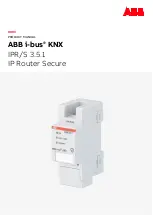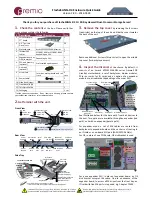
Operating modes and functions
ELSA LANCOM Business
62
Redundant routes
A router receiving information in a RIP packet relating to routes with the same tic and hop
counts as its own routes (redundant routes) does not, of course, have to reannounce
these routes itself to the sender. Therefore, it only sends these routes to the routers
which did not propagate the route. This procedure is known as a “split horizon“.
The Propagate loop (
Setup/IPX-module/LAN-Config/LOOP-Prop.
) can be
used if it is nevertheless necessary to notify redundant routes to the local network. The
routes learned in this way are then flagged in the RIP table with 'LOOP'. Although the
propagation of redundant routes is not prohibited by the Novell specification, it should
still be avoided as much as possible. Therefore, the default setting is 'Off'.
Exponential backoff
When switched on, the unit's IPX router attempts to establish suitable connections to
receive routing information (RIP and SAP information) required for operation from the
remote IPX stations. If this is not possible, due perhaps to a faulty configuration of the
IPX router, the exponential backoff algorithm prevents connections constantly being
established and thus saves charges.
The router will attempt to reach a remote station again with ever increasing wait times
if the first attempt is unsuccessful. The wait time for this is determined as follows:
쮿
The first attempt takes place after 10 + x seconds. x being a number from 0 to 10.
쮿
The second attempt will be made 10 + x seconds after the first attempt has failed.
x now standing for a number from 0 to 20 seconds.
쮿
The higher value for x will now be doubled with each repeated attempt. The router
finally gives up after the 16th unsuccessful attempt. The continual increase in the
wait time means that 16 attempts will take a maximum of one day.
The route will be blocked if all attempts to call the remote station are unsuccessful. You
can then only make further attempts at connection by amending the entry in the routing
table.
The time to the next attempt and the number of attempts to establish a connection can
be found in the network statistics using (
Status/IPX-module/IPX-router/
Networks
).
IPX packet filters
The entries in the routing table determine which other networks will be accessible.
However, they are then also accessible for data packets which are not actually required
in the network of the remote station. These packets can also lead to unwanted
connections being established which cost money.
Содержание LANCOM Business LC-4X00
Страница 1: ...Manual ELSA LANCOM TM Business No 20857 0999...
Страница 4: ......
Страница 10: ...Content ELSA LANCOM Business X...
Страница 22: ...Introduction ELSA LANCOM Business 12...
Страница 42: ...Configuration modes ELSA LANCOM Business 32...
Страница 112: ...Operating modes and functions ELSA LANCOM Business 102...
Страница 146: ...Workshop ELSA LANCOM Business 136...
Страница 152: ...Appendix ELSA LANCOM Business 142...
Страница 160: ...Glossary ELSA LANCOM Business 150...
Страница 170: ...Index ELSA LANCOM Business 160...
Страница 259: ...TCP IP ports ELSA LANCOM Business R89 rscsb 10011 udp qmaster 10012 tcp qmaster 10012 udp Capab Port no Protocol...
Страница 260: ...TCP IP ports ELSA LANCOM Business R90...
















































